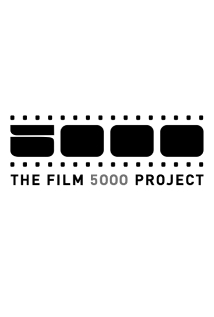

Barry Levinson followed up his acclaimed indie hang-out movie debut, Diner, with this big-budget work of Hollywood glamour and spectacle based on Bernard Malamud's 1952 debt novel about a baseball prodigy with a mysterious past. Beloved by fans of America's National Pastime but hated by lovers of the novel, The Natural is a prestige picture that continues to divide audiences and critics. Robert Redford plays the unknown middle-aged rookie Roy Hobbs, who seems to appear out of nowhere to take the struggling, last-place New York Knights to the top of the league in 1939. The film is presented like an Arthurian legend, complete with an Excalibur-like baseball bat born in fire. It comes fully loaded with symbolism and metaphor that can feel heavy-handed to many but mystically intoxicating to others.
Screenwriters Roger Towne and Phil Dusenberry double down on the mythological aspects of Malamud's novel while completely altering his ending and ultimate meaning. However, if you can go with the over-the-top treatment of this subject, as I certainly can, it's thrilling to get lost in the grander of this picture. The Natural is ostentatious without ever being pretentious. It's proud of the way it draws its characters as archetypes (and dresses them accordingly) and has no shame in how it goes about depicting simplistic concepts like good and evil in ways that should come off as silly and trite but instead feel epic. When Glenn Close, playing "the good woman," Hobb's childhood sweetheart Iris Gaines, rises to her feet in the stands and magically helps Hobbs break the slump he's been in, I should be rolling my eyes at the visual and conceptual treatment of the moment. Costume designers Gloria Gresham and Bernie Pollack dress Close entirely in white and create a hat for her that, when hit by the golden backlight of cinematographer Caleb Deschanel, looks like a halo surrounding her head. Likewise, the "evil women," Kim Basinger and Barbara Hershey, are just as dramatically consumed in countless variations of black dresses. That is, except for one scene. When a femme fatale comes to you dressed in white in a picture like this, that's when you know you really gotta watch out!
Part of what makes this mythological movie cast its spell so effectively is the uniform way in which each department works to evoke a romanticized past. Deschanel (Being There, The Black Stallion, The Right Stuff) composes and lights every single shot as if it were a painting. You can literally pause this movie on almost any frame and it would look like an image out of some fantasy book of color photography from America in the 1930s. We know such a book doesn't exist, yet everything in the film looks so authentic and real. Much credit goes to the incredible period production design by Mel Bourne (Manhattan, Thief, The Fisher King) and Angelo Graham (WarGames, Beverly Hills Cop, Midnight Run), who found or built all the locations we see, which look exactly like our unlived memories. What ties everything together is the Aaron Copland-esque score by singer/songwriter and composer Randy Newman (Ragtime, Parenthood, Toy Story). In his greatest film soundtrack, Newman, like every other artisan who contributed to this picture, evokes the romanticized America that so many of us wish had really existed.
Robert Redford is the perfect romanticized embodiment of America's pastime in this shamelessly Hollywood adaptation of Bernard Malamud’s 1952 novel rendered by an incredible team of cinematic artisans.







